By Bruce Doorly
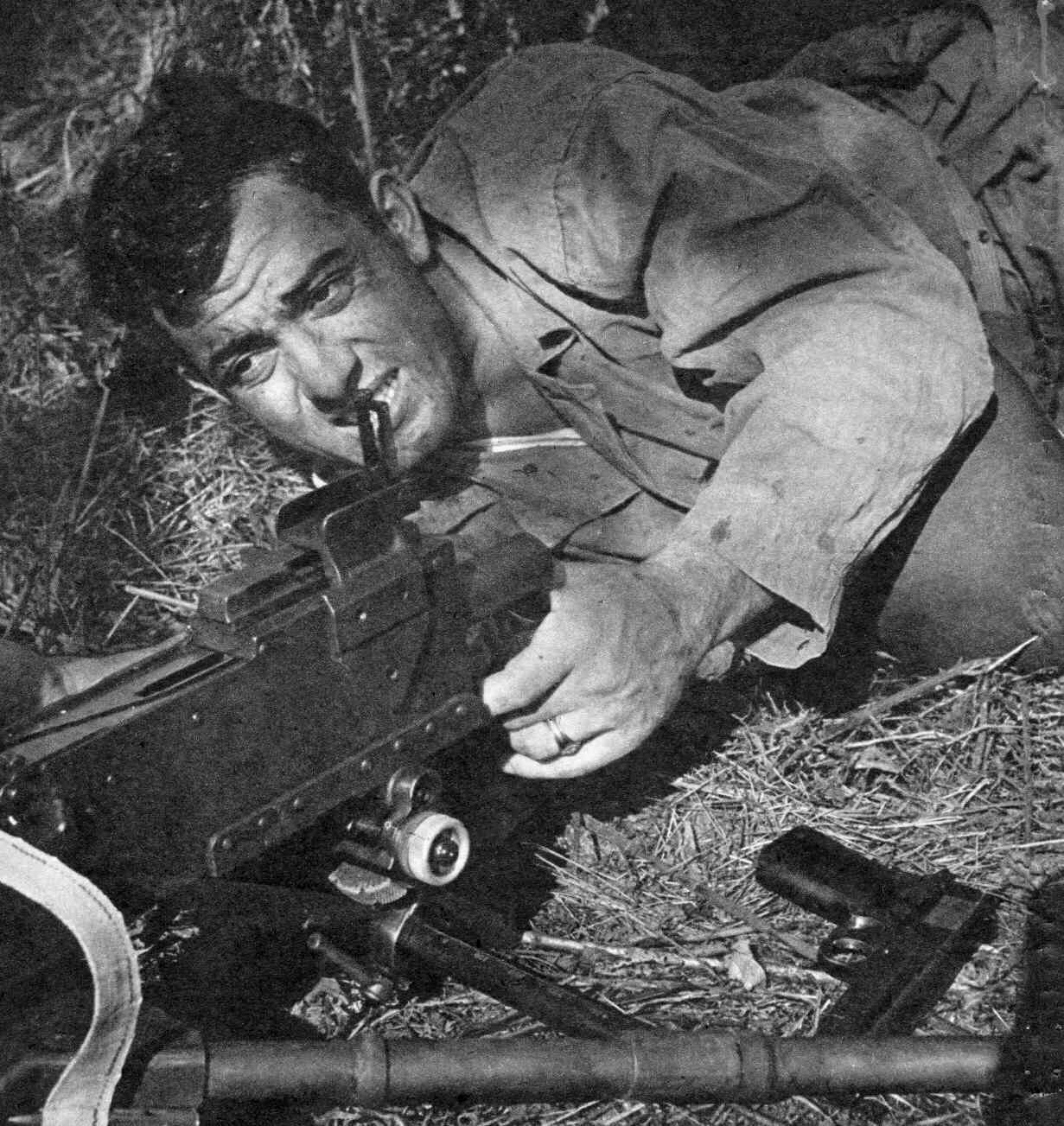
But most people do not know much more than that. What did he actually do? Why was it so important? And what is Guadalcanal?
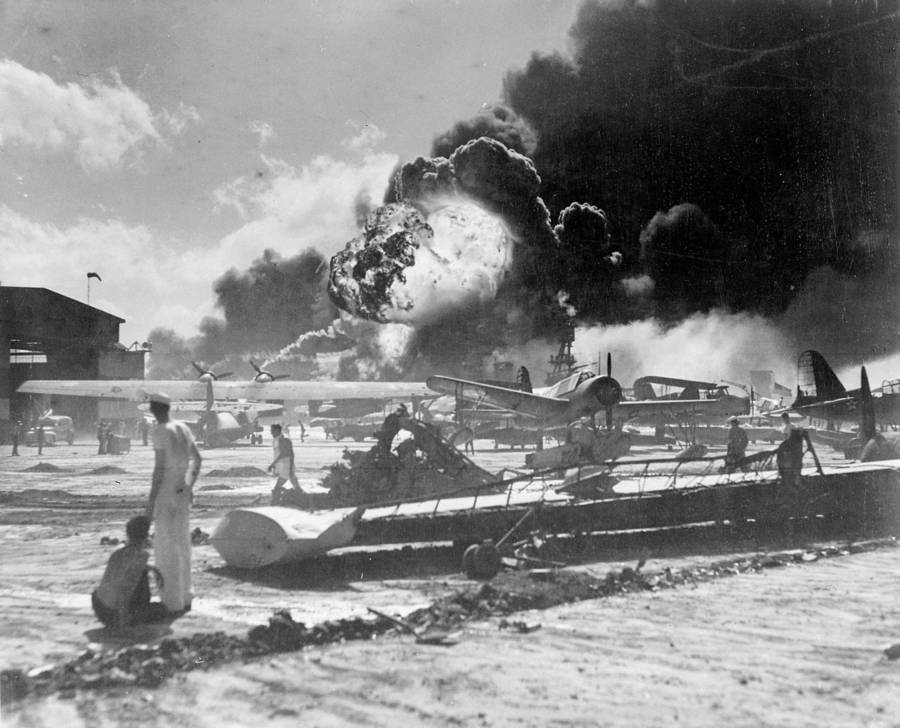
When the Japanese attacked at Pearl Harbor on December 7th 1941, the U.S. was thrust into a war that it had tried to avoid. The surprise attack devastated the U.S. Naval Fleet.
But while the element of surprise would be gone in the next battles with the Japanese, the U.S. was still unprepared for a fight. The Japanese would soon expel our forces from our military bases in the Philippines and take over the previously U.S. held islands of Guam and Wake. The Japanese army seemed invincible. From the start of the War until September of 1942 they were undefeated in every battle that was fought on the ground.

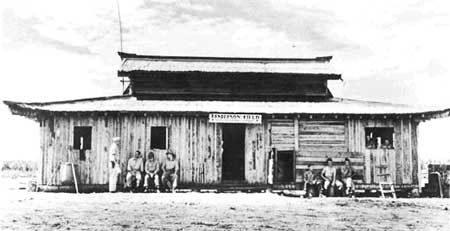
In September of 1942, the U.S. Marines landed at Guadalcanal and easily took the almost completed airfield from the construction workers. The U.S. would finish the airfield naming it Henderson Field after a pilot that had been killed a few months before in the battle at Midway. But taking the airstrip was the easy part, keeping it would prove to be much more difficult. The Japanese soon started shipping thousands of troops toward Guadalcanal to retake the airfield. This resulted in numerous naval battles in the sea around the island as each side attempted to prohibit the other from landing fresh troops and supplies. Dozens of ships on both sides were sent to the bottom of the sea.

Visibility was extremely limited and noises from birds and other creatures rattled constantly.
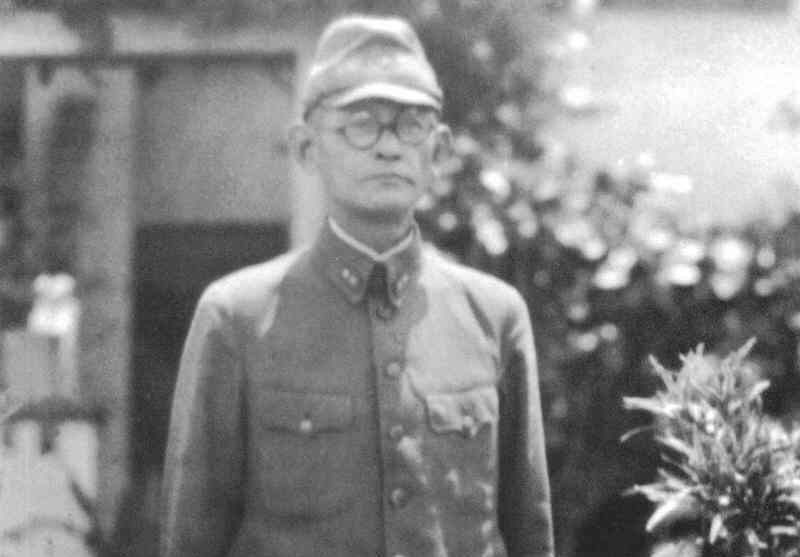
The Japanese commander addressed his men saying
This is the decisive battle between Japan and the United States in which the rise or fall of the Japanese Empire will be decided. If we do not succeed in the occupation of these islands, no one should expect to return alive to Japan.
General Harukichi Hyakutake

On the night of October 24th 1942, the Japanese attacked.
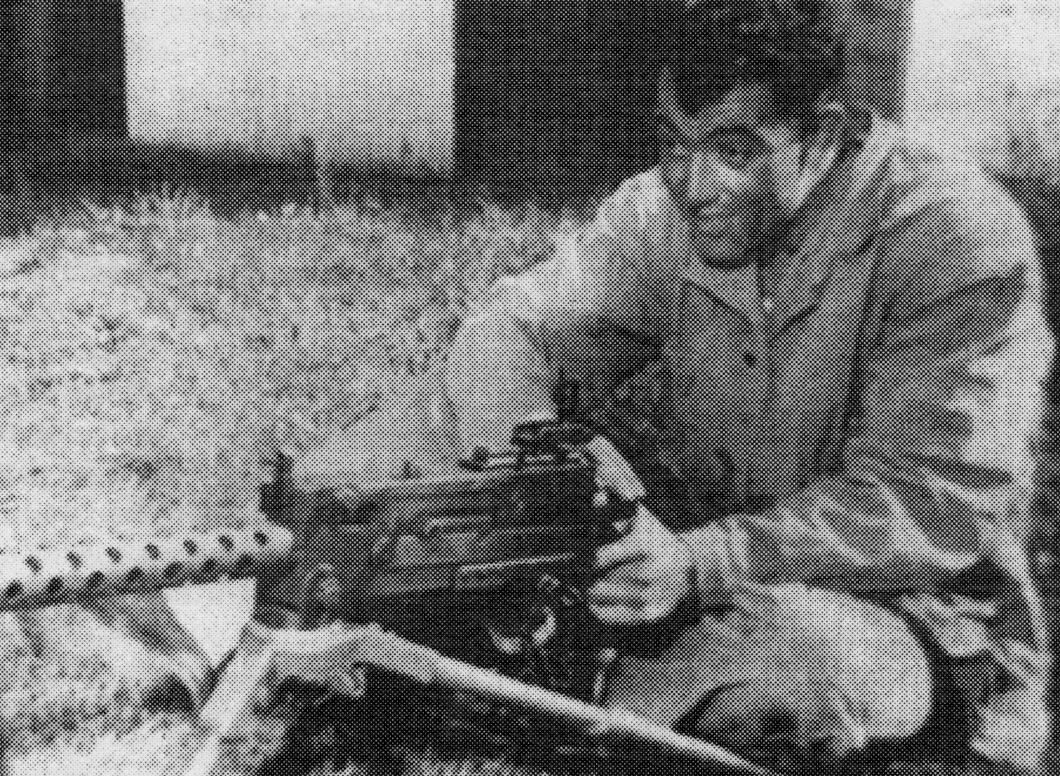
But as the nighttime battle wore on his unit would face many challenges. First, they would take many casualties. Then two of the machine guns were knocked out of action. Basilone in the dark of night put his training to use and was able to repair one of the guns with little visibility by feeling the parts to figure out what was wrong.

His tenacity and skill ensured that he and his men would remain alive and that the fanatical charging enemy would soon be dead.
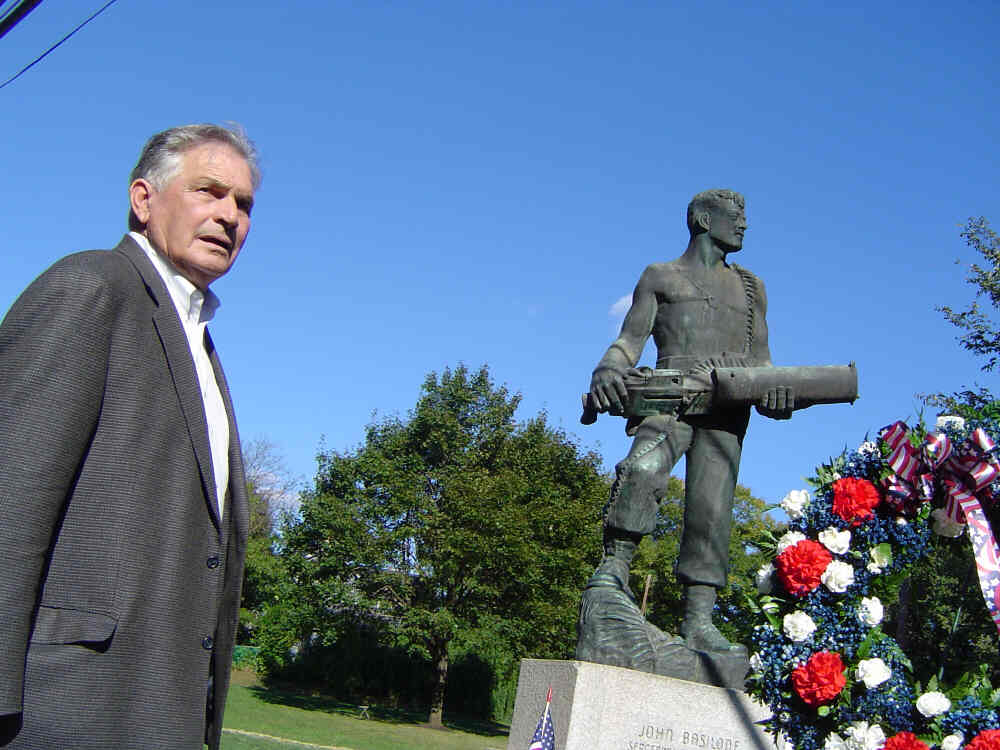
So Basilone made the decision to run back to get more cartridge belts of ammunition. This was a dangerous trek as many Japanese were scattered throughout the dense jungle. As he ran back he dodged bullets and grenades. When he arrived at the ammunition supply dump, he threw the cartridge belts over his shoulder in order to carry them back (This image of Basilone with the ammunition belts over his shoulder is what sculptor Philip Orlando would use for the Basilone Statue.)
Iwo Jima visited Raritan a few ago
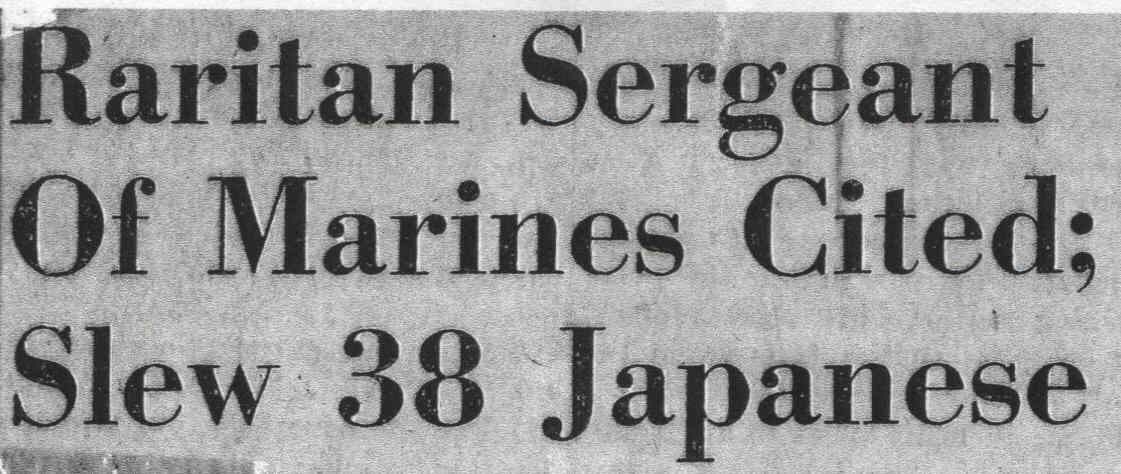
Around one of Basilone’s machine gun positions were 38 Japanese bodies. This number would soon appear in the newspapers.
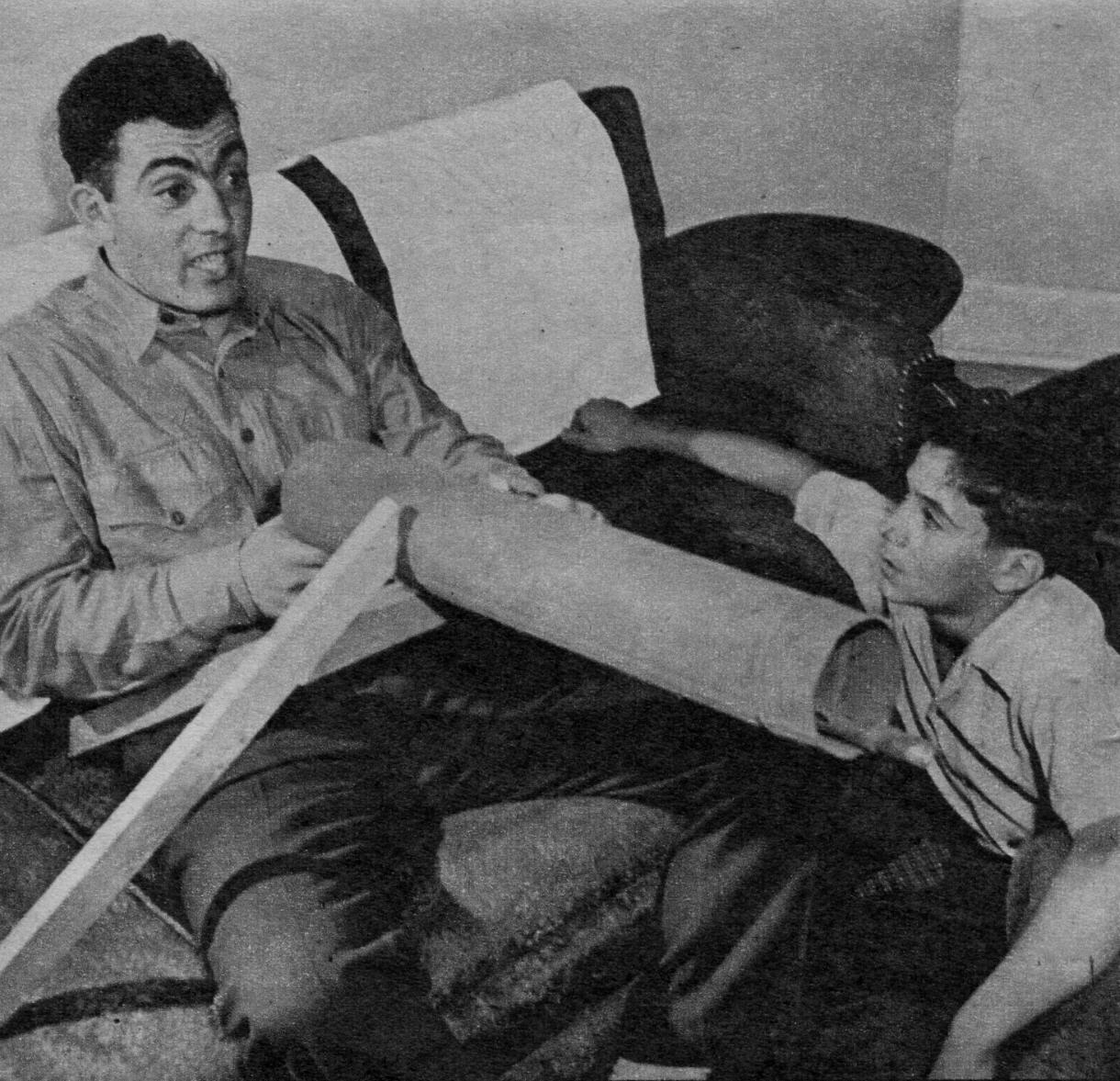
The U.S. had finally turned the tide of the War. A once seemly invincible enemy was now shown to be beatable.
The Marines, along with Basilone, were responsible for that.
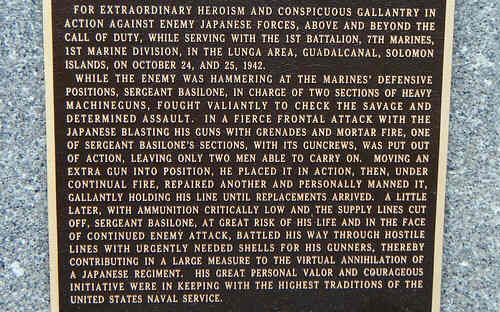
The highest award a soldier can be given. A parade in his honor has been held in Raritan since 1981.

The island today has a population of 58,000. Most of the inhabitants are poor. It still has plenty of jungle. Henderson Field, while initially abandoned after World War II, was later put back in service and today is the main airport on the island, but the name has been changed to Honiara Airport.

The island is also a bird watcher's paradise, as over 200 species of birds can be seen.
Many other tourists come to Guadalcanal to visit World War II battle sites.
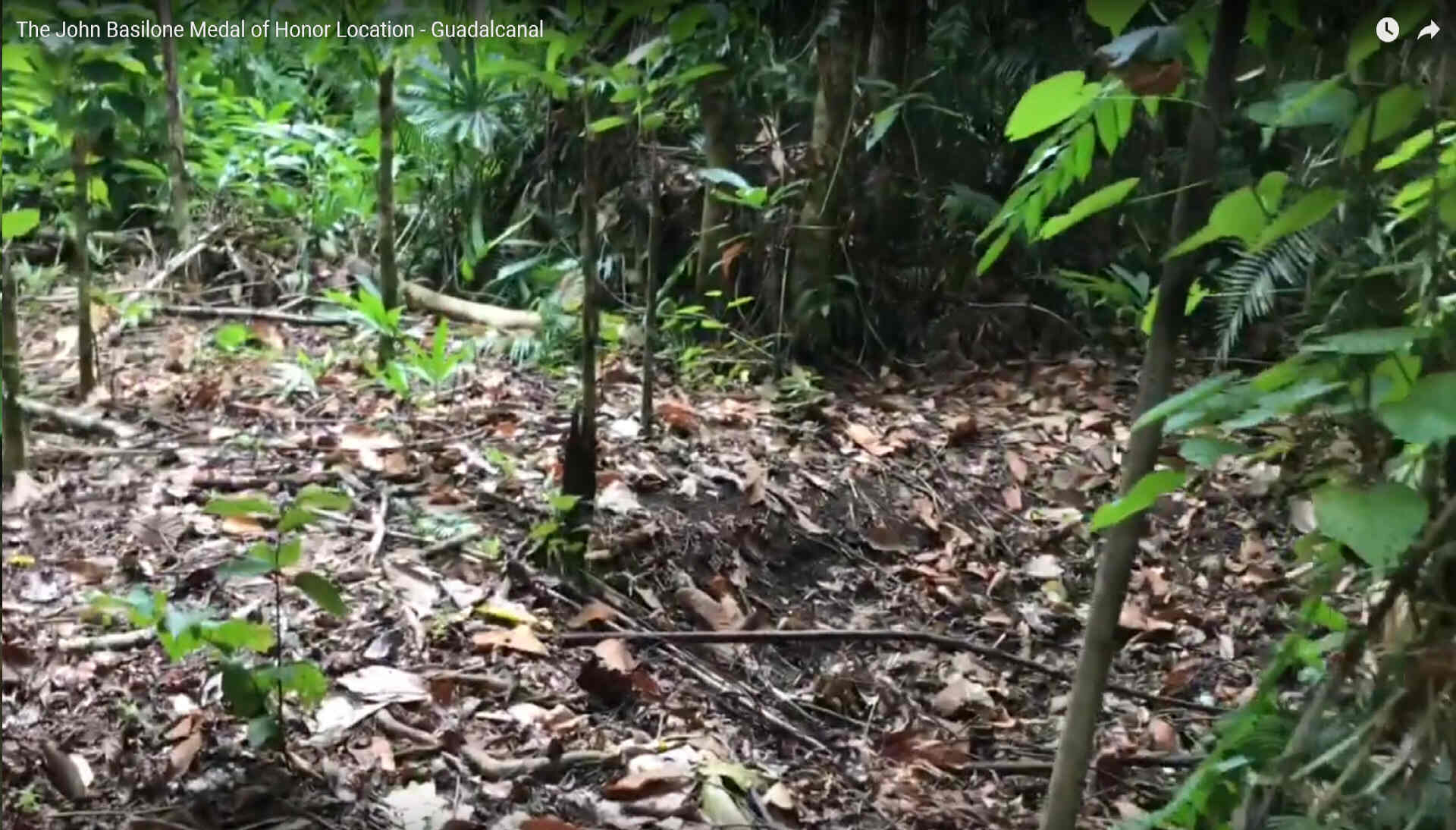
But that site is seldom visited as it requires a tour guide and an hour walk through the jungle to get there.
It is a fascinating site as the original foxhole used by Basilone is still there.
And a few artifacts from that battle remain. Posts that once held barbed wire are still in the ground. A recently posted video on YouTube shows this site.
Click to see the video that takes you to Basilone's Machine Gun Position today at Guadalcanal